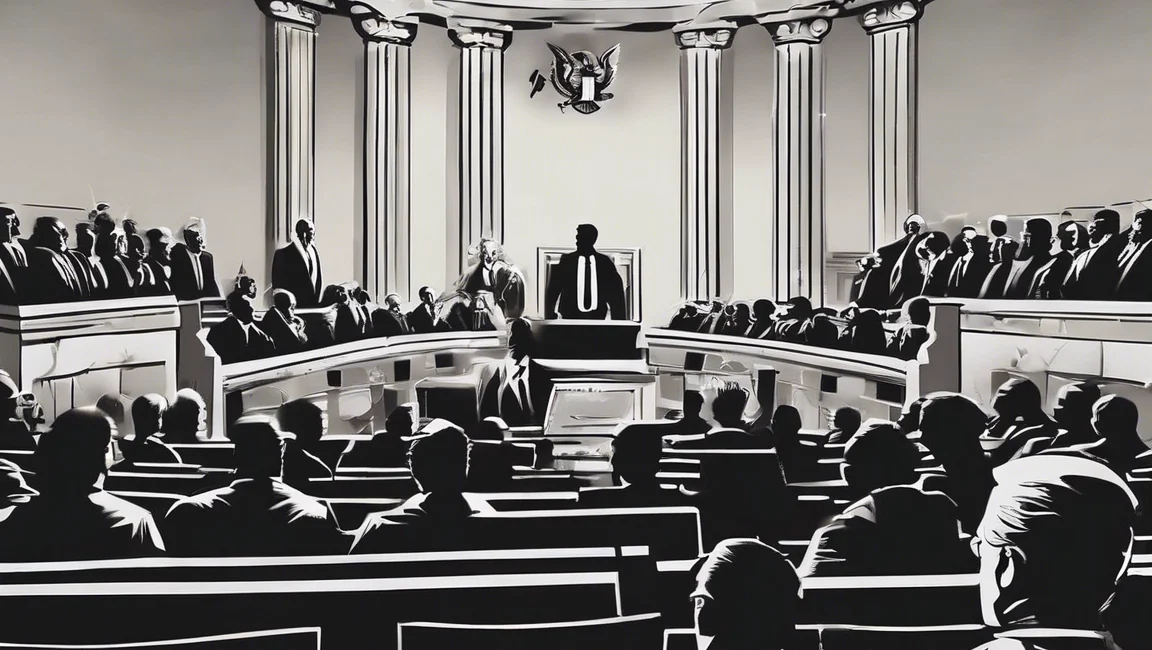
What is the USI’s PERA Position?
US Inventor (USI) disclosed its position on the Patent Eligibility Restoration Act (PERA) in September 2023. Gene Quinn, founder of IP Watchdog, took issue with USI’s position in what can only be called a hit-piece intended to shut down constructive debate. He has since refused to publish anything from US Inventor members.
Disagreement can be reasonable, but to resolve disagreement, facts matter, and so does open discussion.
IP Watchdog picked a side – the side of the corporate lobby, who is ultimately responsible for the current destruction of the U.S. patent system. Quinn chose profit.
USI’s Position on PERA.
Contrary to Quinn’s untruthful hit-piece, USI does not seek to kill PERA. Any statement that US Inventor seeks to kill PERA contradicts the plain and clear language of the USI position:
“For the foregoing reasons, US Inventor opposes PERA as written, but PERA should not die. It presents a valuable opportunity to initiate open and transparent debate in Congress so that the U.S. public policy regarding patent eligibility can be properly formed, and legislation can be crafted to effectuate that public policy.”
To educate Congress, USI describes how PERA affects inventions implemented in software, particularly artificial intelligence, and the very real risks of PERA making the already tricky Section 101 morass even worse.
PERA creates exceptions that are unique to U.S. law, thereby restricting U.S. innovation in ways that no other country restricts their own innovation systems. A sound public policy justifying these exceptions must be publicly disclosed and openly debated.
What is the public policy that justifies:
- Restrictions on U.S. innovation where no other country has similar restrictions;
- Broad categories of ineligible subject matter enveloping the entire software industry;
- If the invention falls into an ineligible category, flipping the burden to prove an invention is not ineligible onto the inventor; and
- If there is one conceivable way in which an invention can be performed without a machine or manufacture, the invention cannot be made eligible.
- Why are dance moves not eligible to be patented?
USI simply wants PERA debated in an open forum so that this mess is fixed correctly.
USI Does Not Want to Kill PERA
Quinn states, “For reasons I don’t understand, many inventors are just not being truthful about the provisions of patent reform bills now pending in Congress. In fact, some in the independent inventor community are attempting to rally support to kill the overwhelmingly pro-patent, pro-innovation, patent eligibility bill now pending.”
The simple truth is clearly written in USI’s position: USI does not want to kill PERA. USI aims to turn it into a vehicle that brings us to the right solution. PERA can only become that vehicle if a debate on the public policy justification of PERA takes place. That debate should have taken place over the last five years in the 101 Taskforce. Unfortunately, due to the influence of the corporate lobby, it did not.
This debate is crucial. If there is sound public policy supporting PERA as written, then PERA should pass. If there is no sound public policy, then a new public policy must be formed, and PERA must be rewritten to effectuate that policy.
The Current PERA is Risky Business
Quinn states: “PERA also specifically and unceremoniously does away with the so-called judicial exceptions to patent eligibility, which the Supreme Court and Federal Circuit have aggressively used since Mayo and Alice to find software and many biotech innovations patent ineligible.” Quinn is correct on one part, but disingenuously omits the important second part.
PERA does eliminate most judge-made exceptions in its preamble:
“(A) All judicial exceptions to patent eligibility are eliminated.”
However, PERA creates a completely new exception that is just as lethal:
‘‘(B)(i) Subject to clause (ii), a process that is substantially economic, financial, business, social, cultural, or artistic, even though not less than 1 step in the process refers to a machine or manufacture.”
That first part flips the burden to the inventor, who must now prove the patent is not ineligible in the next provision:
‘‘(ii) The process described in clause (i) shall not be excluded from eligibility for a patent if the process cannot practically be performed without the use of a machine or manufacture.”
This means that if there is even one conceivable way in which an invention can be performed without a machine or manufacture, the inventor cannot prove the invention is not ineligible.
There are hundreds, maybe even thousands, of cases where the courts or the USPTO have found inventions to be ineligible as abstract ideas because they could conceivably be performed using pencil and paper.
While PERA eliminates the abstract idea exception, it does not eliminate the pencil and paper test. In fact, PERA’s new exception is clearly intended to incorporate the pencil and paper test. The detrimental effects of the abstract idea exception’s use of the pencil and paper test on inventions implemented in software is well-documented, and PERA’s new exception will bring the same disastrous results.
Facts Matter in Finding Solutions
USI met with Senator Tillis’s office multiple times to discuss the USI position. Much has been discussed related to PERA’s language and the need to state a public policy justification. The Tillis’s staff thanked USI for not trying to kill PERA and working with Tillis’s office. We look forward to more discussions and believe that a solution can be found.
Reasonable people can disagree, but disagreement can only be resolved by debating the facts openly and without hostility. Ignoring or mischaracterizing facts will not contribute to fixing this complex problem. Instead, it will further divide the parties genuinely seeking a solution.
Real Skin in the Game
The members of USI have real skin in this game. We are not lawyers who thrive on uncertainty caused by bad law. We are real people, some of whom have lost everything, and others who are fighting their way through the 101 quagmires for the survival of their businesses and the preservation of their livelihoods. We need 101 fixed right.
Serious Matters Require Serious Discussions
At stake is the monopolization of Big Tech, the future of U.S. Biotech innovation, and U.S. competitiveness with China – an aggressive communist dictatorship that militarily threatens the U.S. and the world over Taiwan.
China already leads in 37 of 44 technologies critical to our national security. If the U.S. does not get 101 fixed right, China will continue to advance technologically and economically beyond the U.S. due to this self-inflicted restriction on U.S. innovation.
These are serious matters. USI is not trying to stop a fix; we are trying to ensure it’s the right fix. If Congress gets it wrong, it will be a decade or more before there is sufficient political will to revisit the issue, leaving many USI members with no way to save their livelihoods and the U.S. unable to regain our once-held technology lead against China.
USI is not trying to kill PERA. Indeed, USI’s sole aim is to ensure that Congress does it right this time by stimulating the necessary foundational policy debate that never happened.
Now is not the time to pick petty fights or mischaracterize anyone. Now is the time to debate policy, establish policy, and fix 101 accordingly. Now is the time to get it right.
Paul Morinville is Founder and Executive Director of SPARK Innovation. SPARK Innovation strives to create an policy environment where the conception, protection, and commercialization of technologies critical to our economic and national security prosper thereby enabling the United States to take back the global technological lead from China. Paul is an inventor and has been an executive at multiple technology startups including computer hardware, enterprise middleware, video compression software, artificial intelligence, and medical devices, and has licensed patents in the U.S. and China.






